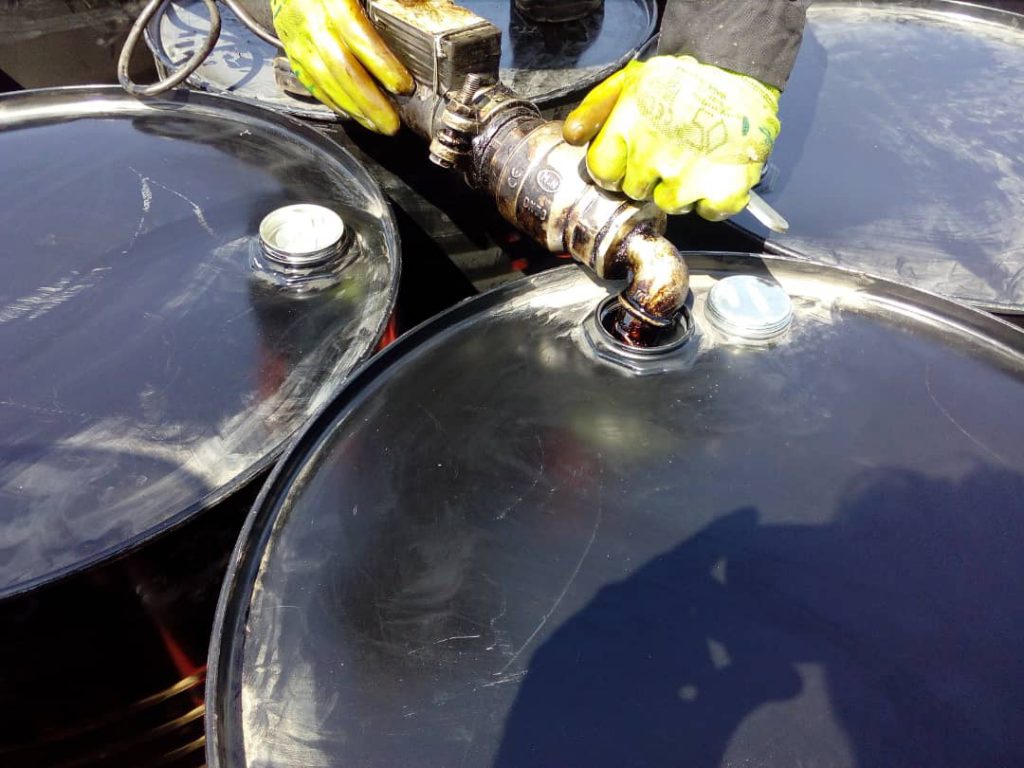Rapid Curing Cutback Asphalt

Definition of Rapid Curing Cutback Asphalt
Cut-back asphalts is defined as the bitumen whose viscosity value will be greatly reduced by the addition of volatile diluents (high viscosity). It mainly depends upon the diluents used. Generally, three types of cutbacks are used as follows, 1) rapid curing, 2) medium curing and 3) slow curing.
Rapid curing cutback asphalt cement is a combination of light diluents of high volatility, generally in the gasoline or naphtha boiling point range (RC-70, 250, 800, 3000), and asphalt cement.
Rapid curing cutback asphalt combinations are prepared starting from the lighter diluents, and even from the fluid of higher viscosity. The grades used for rapid curing cutback bitumen are RC-70, RC-250, RC-800 and RC-3000. Here, the value given by numbers 70, 250, 800, and 3,000 represents the kinematic viscosity of the bitumen given in centistokes. The solvent concentration of rapid curing asphalt is 15-45% of the volume of asphalt cement used.
Different degrees of fluidity exists for each case and it depends on the proportion of the solvent of asphalt cement. In a minor degree cutback, liquidity may get affected by the hardness of base asphalt from which the cutback is made. It is used for the prime coats.
It is used in the pavement design process. It reacts quickly for the spray applications of bond and tack coats. It is helpful to seal the aggregate chips and sand seals. Rapid curing asphalts are mainly used for surface treatment.
Cut back asphalt RC 800 is useful for waterproofing surfaces and plug capillary voids. Grade RC250 acts as a seal coat in roadway pavements.
Mainly two tests are conducted on cut-back asphalt and are given as 1) residue and 2) cut back test. The testing of residue focusses on examination of penetration, ductility, and solubility. The testing of cutback bitumen includes the distillation, viscosity and flash point tests.
The degree of liquidity developed in each case depends principally on the proportion of solvent to asphalt cement. To a minor degree, the liquidity of the cutback may be affected by the hardness of the base asphalt from which the cutback is made. The degree of fluidity results in several grades of cutback asphalt—some quite fluid at ordinary temperatures and others somewhat more viscous. The more viscous grades may require a small amount of heating to make them fluid enough for construction operations.
Application of Cutback bitumen rapid curing
Rapid Curing Cutback Bitumen is made by reducing the viscosity of and ordinary bitumen by adding mostly petroleum type solvent. Cutback Bitumen are used because their viscosity is lower than that of neat asphalt and can thus be used in low-temperature applications.
The rapid-setting grades are designed to react quickly primarily for spray applications, such as bond/tack coats, aggregate chips seals, sand seals and similar surface treatments.
Rapid curing Cutback bitumen are typically used as prime coats and tack coats. Generally, Cutback Bitumen are divided into three groups depending on their volatility of the solvent added:
RC cutback bitumen
After a RC cutback is applied the solvent evaporates away and only the Bitumen is left. A rapid curing cutback bitumen is said to cure as the petroleum solvent evaporates.

